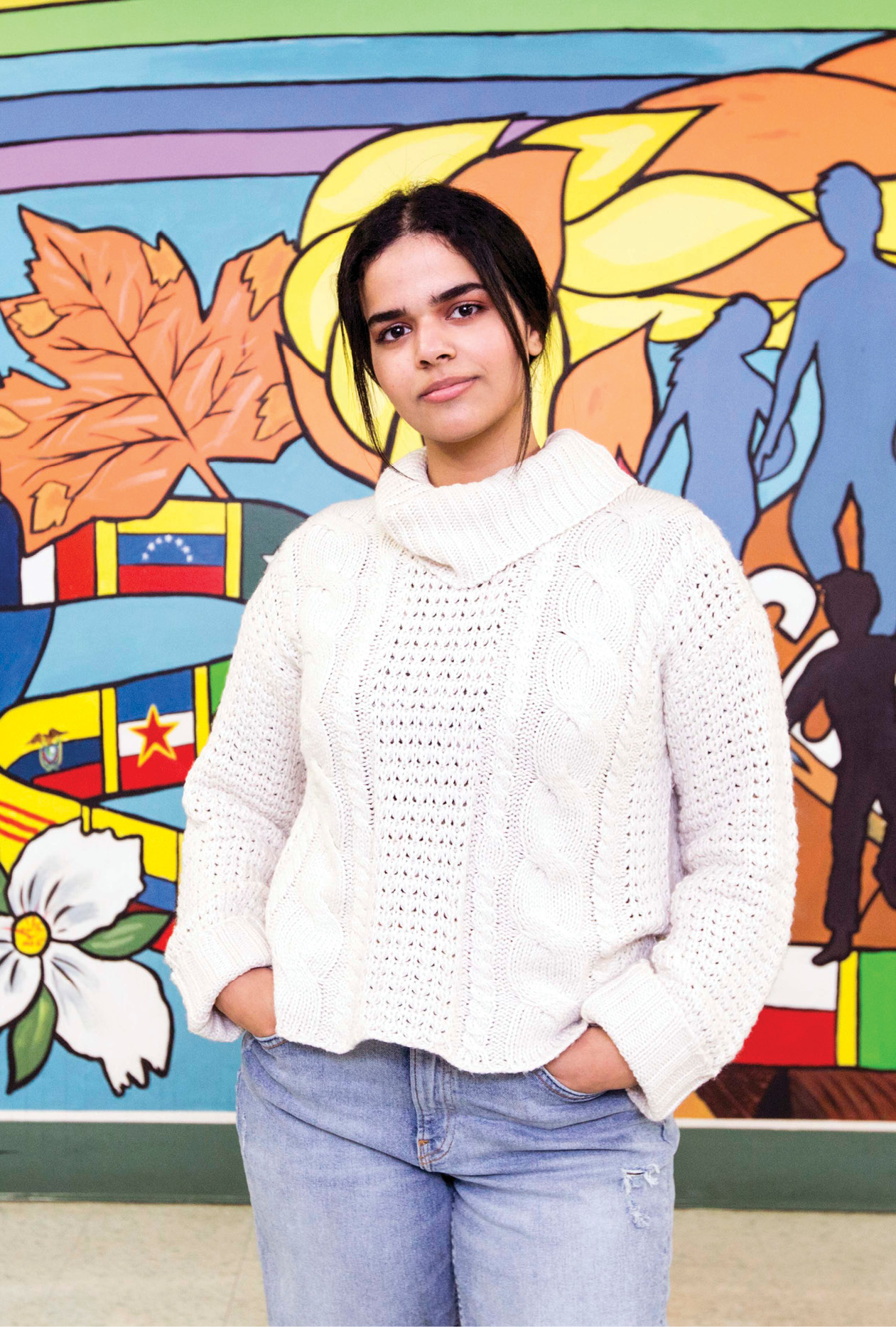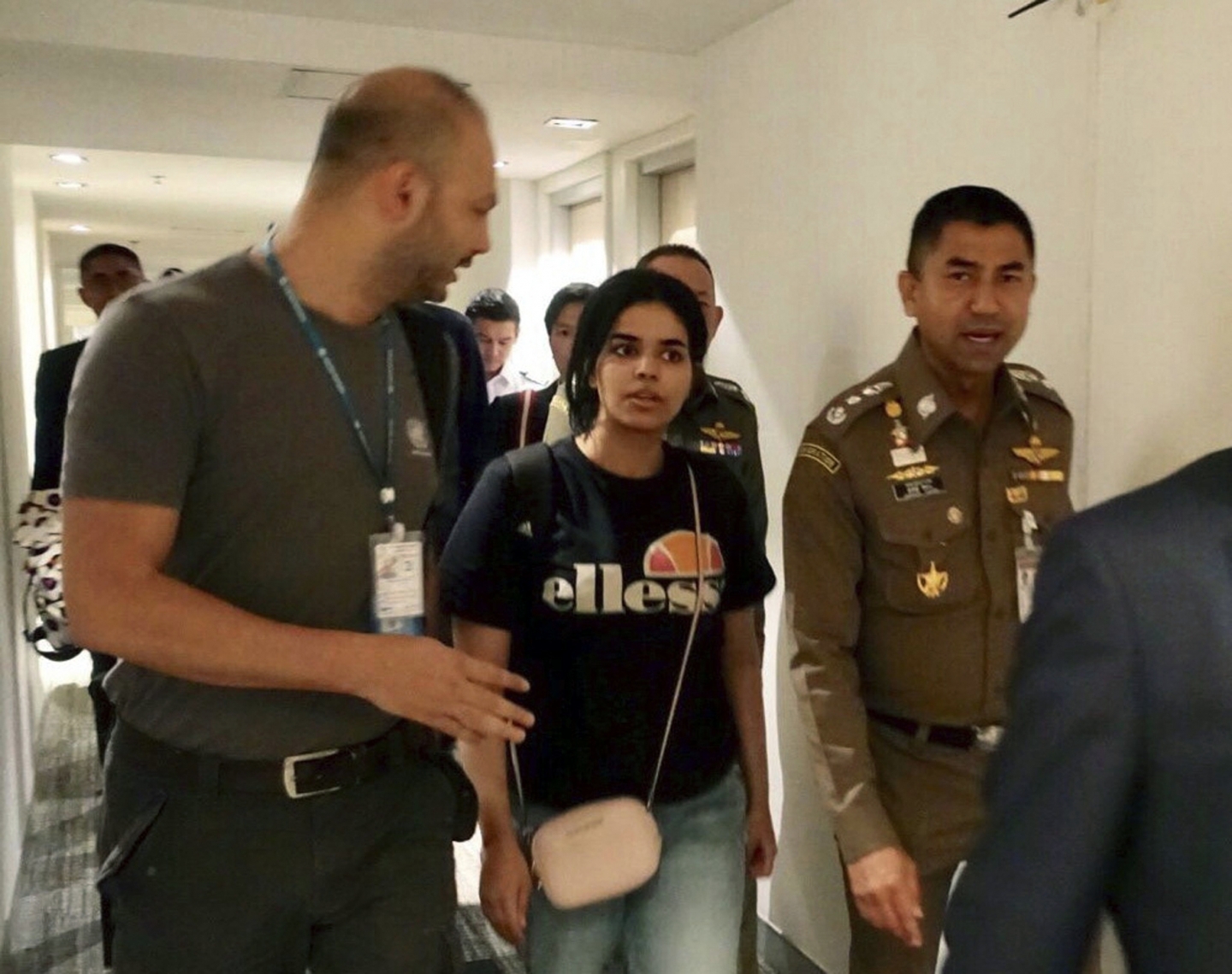Rahaf Al-Harbi: The Saudi Teenager Who Fled Oppression And Became A Symbol Of Hope
Rahaf Mohammed Al-Qunun, who goes by the name Rahaf Al-Harbi, is a Saudi teenager who fled her family and country in 2019 to escape alleged abuse and oppression. She was granted asylum in Canada and has since become a vocal advocate for women's rights and an outspoken critic of the Saudi government.
Editor's Notes: Rahaf Al-Harbi: The Saudi Teenager Who Fled Oppression And Became A Symbol Of Hope have published today date. We hope this article provides a comprehensive summary of Rahaf's story and her fight for women's rights in Saudi Arabia.
Through extensive research and analysis, this Rahaf Al-Harbi: The Saudi Teenager Who Fled Oppression And Became A Symbol Of Hope guide can help readers understand the significance and impact of her story.
Key differences or Key takeaways:
| Rahaf Al-Harbi | Other Saudi women who have fled the country | |
|---|---|---|
| Age | 18 | Varies |
| Reason for fleeing | Alleged abuse and oppression | Varies, but often includes domestic violence, forced marriage, or other forms of abuse |
| Destination | Canada | Various, including Canada, the United States, and Europe |
| Impact | Has become a vocal advocate for women's rights and an outspoken critic of the Saudi government | Have helped to raise awareness of the plight of women in Saudi Arabia and have inspired other women to speak out against abuse |
Main article topics:
- Rahaf Al-Harbi's story
- The challenges facing women in Saudi Arabia
- The role of social media in raising awareness of these issues
- The future of women's rights in Saudi Arabia
Rahaf Al-Harbi's story is a powerful reminder of the challenges facing women in Saudi Arabia. She is a brave young woman who has spoken out against oppression and injustice, and her story has inspired others to do the same. We hope that her story will continue to raise awareness of these issues and help to bring about change in Saudi Arabia.
FAQ
The case of Rahaf Al-Harbi, a Saudi teenager who fled her country in 2019, raised important questions about women's rights and the treatment of refugees. This FAQ section provides answers to some of the most frequently asked questions about Rahaf's story and its implications.

Rahaf Mohammed: "My Escape From Saudi Arabia to Freedom" - Source primer.com.au
Question 1: Why did Rahaf flee Saudi Arabia?
Rahaf fled Saudi Arabia because she feared for her safety and freedom. She had been subjected to physical and emotional abuse by her family and was at risk of being forced into an arranged marriage. She also feared that she would be killed for her outspoken views on women's rights.
Question 2: How did Rahaf escape from Saudi Arabia?
Rahaf escaped from Saudi Arabia by boarding a flight to Thailand. She had planned her escape for months and had purchased a plane ticket using a fake passport. When she arrived in Thailand, she was detained by immigration officials who attempted to deport her back to Saudi Arabia. However, Rahaf refused to board the flight and barricaded herself in a hotel room. She then used social media to share her story and ask for help.
Question 3: What happened after Rahaf's story became public?
After Rahaf's story became public, she received international attention and support. The United Nations intervened and granted her refugee status. She was eventually allowed to resettle in Canada, where she now lives.
Question 4: What was the international reaction to Rahaf's case?
Rahaf's case sparked outrage and condemnation from human rights groups and governments around the world. Many people praised her for her bravery and determination, and called on Saudi Arabia to improve its human rights record.
Question 5: What are the implications of Rahaf's case for women's rights in Saudi Arabia?
Rahaf's case highlighted the challenges that women face in Saudi Arabia, where they are subjected to a number of restrictions and abuses. Her story has helped to raise awareness of these issues and has put pressure on the Saudi government to make reforms.
Question 6: What can be done to help women fleeing oppression?
There are a number of things that can be done to help women fleeing oppression. One important step is to provide them with safe havens where they can seek asylum. Another is to support organizations that work to promote women's rights and combat gender-based violence.
Rahaf Al-Harbi's story is a reminder of the importance of fighting for women's rights and for the protection of refugees. Her bravery and determination have inspired many people around the world, and her case has helped to raise awareness of the challenges that women face in many parts of the world.
To learn more about Rahaf Al-Harbi and her story, visit this website: Rahaf Al-Harbi: The Saudi Teenager Who Fled Oppression And Became A Symbol Of Hope
Tips
As Rahaf Al-Harbi's story demonstrates, overcoming oppression and finding hope is possible. Here are some essential tips to guide you through similar challenges:
Tip 1: Seek Help From Trusted Sources
Reach out to family, friends, or organizations that understand your situation and can provide support and protection.
Tip 2: Gather Evidence of Abuse
Document any incidents of mistreatment, including texts, emails, or photos, to strengthen your case for help.
Tip 3: Plan a Safe Escape Route
If necessary, plan a safe way to leave your current situation without endangering yourself.
Tip 4: Use Your Voice and Network
Share your story with trusted individuals and social media platforms to raise awareness and seek support.
Tip 5: Be Patient and Persistent
Overcoming oppression takes time and determination. Don't give up on seeking help and advocating for your rights.
Tip 6: Seek Professional Support
Consider connecting with therapists or counselors who can provide emotional and psychological support during the healing process.
Tip 7: Connect with Others
Join support groups or online communities where you can connect with others who have faced similar challenges.
Tip 8: Focus on Your Goals and Values
Define your goals and values to stay motivated and remind yourself of the reasons for your fight against oppression.
Remember, hope can be found even in the darkest of times. By following these tips and staying true to your beliefs, you can overcome adversity and create a better future for yourself.
Rahaf Al-Harbi: The Saudi Teenager Who Fled Oppression And Became A Symbol Of Hope
Rahaf Al-Harbi's courageous escape from Saudi Arabia to seek asylum in Canada in 2019 made her an international symbol of hope and resistance against oppressive regimes worldwide.

Runaway Rahaf Mohammed writes book about escaping Saudi life - Source nypost.com
- Oppression: Escaping Saudi Arabia's strict guardianship laws.
- Asylum: Seeking refuge in Canada amidst international attention.
- Activism: Using her platform to advocate for women's rights globally.
- Inspiration: Empowering others facing similar oppression.
- Resilience: Overcoming challenges and finding strength in adversity.
- Hope: Representing the possibility of change and freedom.
Rahaf's story exemplifies the courage and determination of those who dare to challenge oppressive systems. Her asylum request sparked global solidarity, highlighting the plight of women and girls living under restrictive regimes. Her activism continues to inspire countless individuals, demonstrating the transformative power of hope in the face of adversity.

By Granting Asylum to Saudi Woman, Canada Shows Its Moral Leadership - Source www.cigionline.org
Rahaf Al-Harbi: The Saudi Teenager Who Fled Oppression And Became A Symbol Of Hope
Rahaf Al-Harbi, an 18-year-old Saudi teenager, fled her country in 2019 after renouncing Islam and fearing for her life. She was detained in Thailand but eventually granted asylum in Canada. Her case has highlighted the plight of Saudi women who face severe restrictions on their freedom, including the need for a male guardian's permission to travel and marry.

Rebel: My Escape from Saudi Arabia to Freedom by Rahaf Mohammed | Goodreads - Source www.goodreads.com
Al-Harbi's story has resonated with women around the world who have faced similar experiences of oppression. She has become a symbol of hope for those who are fighting for their rights. Her case has also put pressure on the Saudi government to reform its laws on women's rights.
In 2019, Saudi Arabia granted women the right to drive and lifted some restrictions on their travel. However, women still face many challenges, including discrimination in the workplace and family law. Al-Harbi's story is a reminder that there is still much work to be done to achieve gender equality in Saudi Arabia.
Conclusion
Rahaf Al-Harbi's story is a powerful reminder of the challenges that women face around the world. Her story also provides hope that change is possible.
Al-Harbi's case has helped to raise awareness of the plight of Saudi women and has put pressure on the Saudi government to reform its laws on women's rights. Her story is a reminder that we must continue to fight for the rights of all women, regardless of where they live.